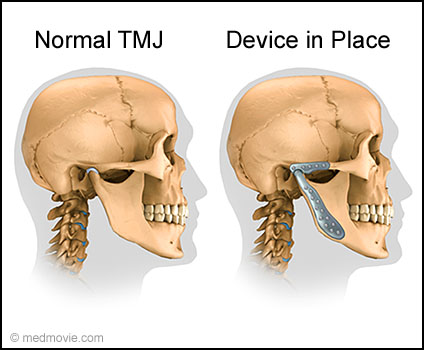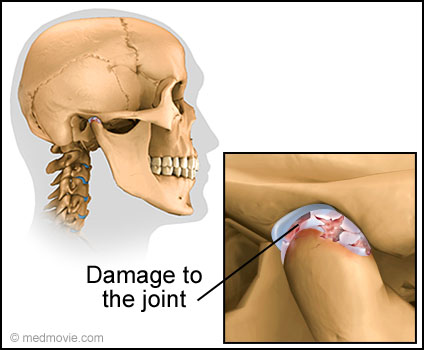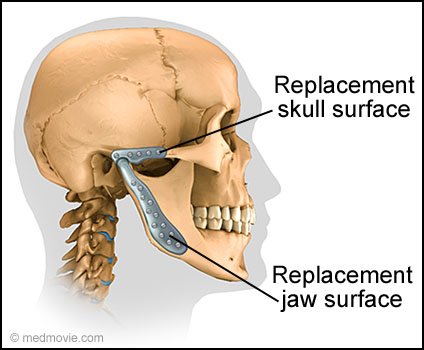
Temporomandibular Joint (TMJ) Replacement
The temporomandibular joint (TMJ) surfaces are formed by the skull and the the jaw. The surfaces are covered by cartilage.
Certain conditions may indicate the need for a replacement for the TMJ joint such as: osteoarthritis (shown), fractures, fused joints, abnormalities that reduce function, and tumors.
A replacement joint can help alleviate pain and improve function. The replacement joint usually has two parts that replace the joint surfaces and is made of a combination of metal and plastic.
Figure 1: Comparison of a normal TMJ joint and a replacement TMJ joint.
Figure 2: Normal TMJ joint.
Figure 3: A damaged TMJ joint.
Figure 4: Replacement TMJ joint
oml_0001a



